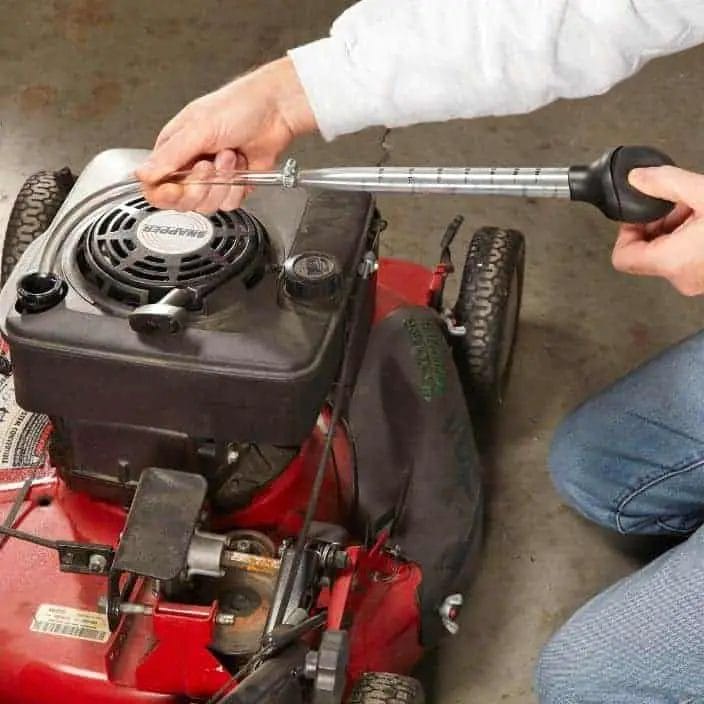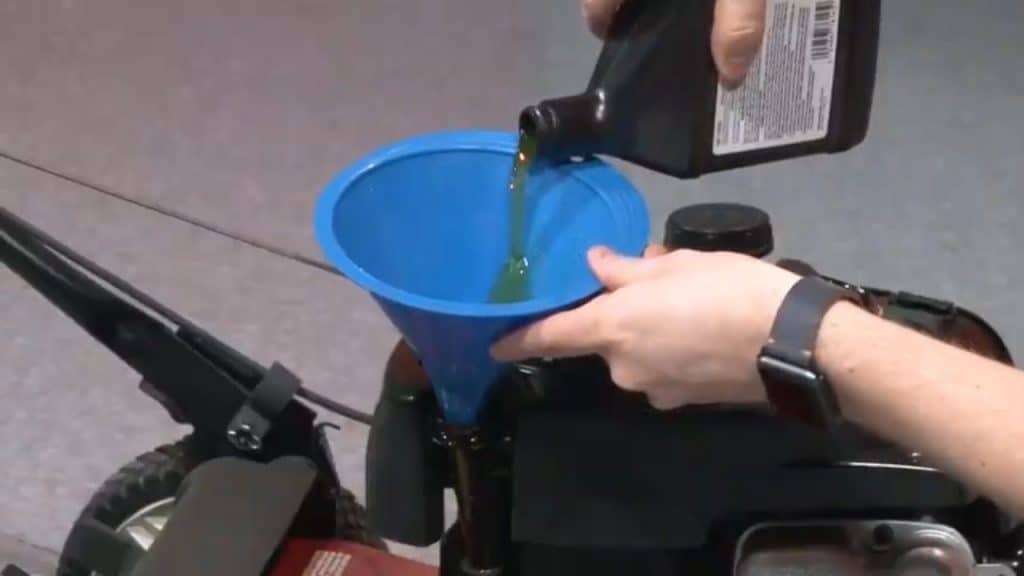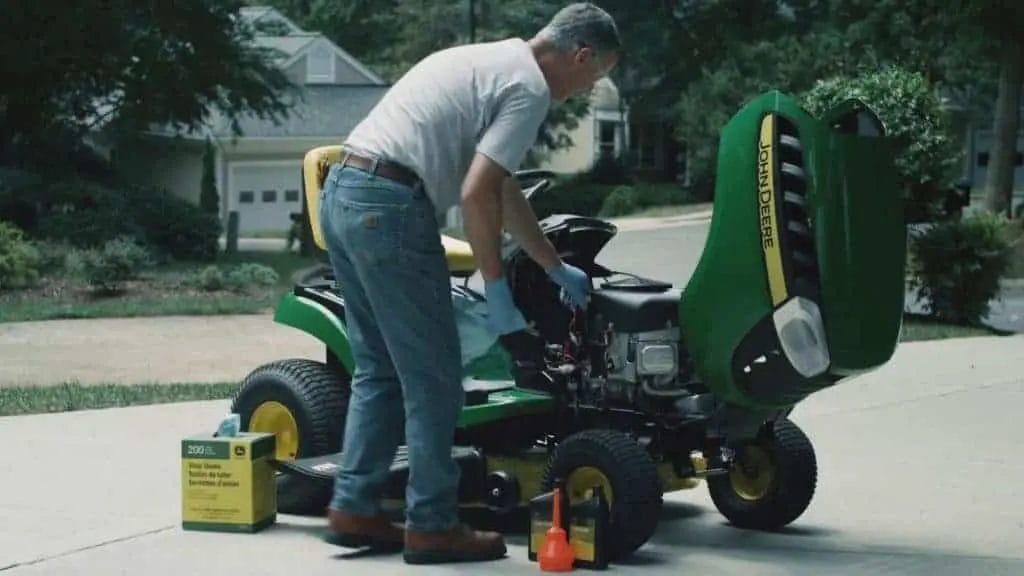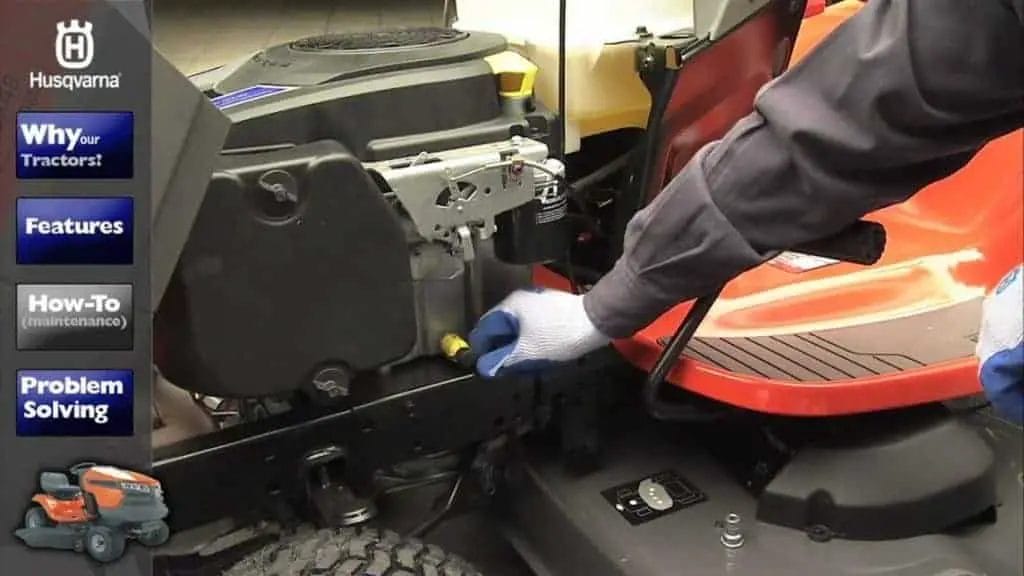When it comes to enhancing a lawn mower’s performance, changing the oil regularly is very important and can prolong the life of your mower significantly. But not everyone knows exactly how to go about draining the old oil. If this sounds like you, keep reading!

Your lawn mower will be one of the most important tools in your gardening arsenal and because of this, it’s vital to ensure you look after it properly. A key part of lawn mower maintenance is draining and replacing old oil.
Experienced gardeners will know that lawn mower oil needs to be replaced every so often to ensure it is fresh and helping the lawn mower to do its job as efficiently as possible. But not everyone knows how to go about draining lawn mower oil in order to replace it.
This article will look at the role of oil in your lawn mower’s function, as well as why it’s important to keep the oil clean and fresh. Then the reason you’re here – we’ll look at how to drain the mower oil correctly so that you don’t risk any faults occurring after the oil change.
Before tackling the main question, let’s see why oil is so important to a lawn mower:
If you’ve ever had a squeaky door hinge or stubborn padlock that wouldn’t open, you’ll know all about friction and the types of trouble it can cause. Friction is the main reason why lawn mowers require oil.

Just as a spritz of WD-40 will loosen up the hinge or padlock so that they function normally again, so will lawn mower oil lubricate your lawn mower. If there’s too much friction at play, a lawn mower’s mechanical parts begin to rub on each other too much which can cause all kinds of damage to the individual parts, as well as to the mower as a whole.
Think about how your hands get warmer when you rub them together for a while. Not so bad huh? Now imagine if your hands caught fire if you rubbed them too much or too hard. Not so great… Unfortunately, this is essentially what happens to your lawn mower without oil.
Too much friction from parts rubbing and scraping against one another will lead to heat being generated which, in excess, can lead to overheating and machine shut-down in severe cases. Your lawn mower might not literally catch fire, but overheating can fry its connections and cause lasting damage.
Moral of the story? Keep your lawn mower well-oiled!
A lawn mower is a complex machine similar in many ways to a car. Just as your car needs to have its fuel and oil topped up and changed every now and then, so too does your lawn mower. In the case of fuel, this will depend on the type of mower you have as well as how often you use it, but the need for fresh, clean oil is universal.

Like fuel, oil does not last indefinitely in your lawn mower and the more you use your mower, the more quickly you’ll have to replace the oil. This is because the more the mower’s parts move, the more oil will be needed to continue lubricating the parts.
Oil also has an expiration date, which is something many people don’t stop to consider. If you don’t use your lawn mower for a few months, any oil still in it will be sitting stagnant which will result in stale oil.
Stale oil is significantly less effective than fresh oil, and you might find it difficult to start your mower after it’s been idle for a while without an oil change.
It’s also important to drain and replace your lawn mower oil regularly to ensure that any debris and impurities are removed from your mower, as any unwanted substances or particles could hinder the function of the mower’s machinery.
Changing your lawn mower’s oil is also just a good way to keep tabs on how it’s functioning. Maintenance is key in ensuring your lawn mower has the longest, most efficient lifespan possible so regular checks and changes can go a long way!
With those reasons out of the way, let’s move onto how to drain old oil.
The method you use to drain your lawn mower’s oil will vary slightly depending on whether you have a riding mower or a regular mower. You can find the methods for both types below:
If the aim with either kind of mower is to replace the oil yourself, then simply fill the oil tank to the correct level with the recommended oil type for your specific mower before replacing the oil cap/valve (on a riding mower) or the dipstick (on a pushing mower).

For reasons we’ve touched on above, it’s important to change your oil regularly. But now regularly is appropriate? How often is too often?
It can be difficult to know when to go through the process of draining and changing your mower’s oil if you’re quite new to it. But as a guide, these are some good points to consider an oil change:
Bearing these times in mind can help you routinely check and maintain your mower so that it lasts longer overall and works more effectively.
Now you’ve seen not only what function oil plays in your lawn mower and why it’s important, but also how to go about draining old oil and how often. These guidelines and information should equip you with everything you need to keep your mower well lubricated and running smoothly!
If you’ve drained out the old oil and don’t plan on using your mower for a while, it’s a good idea to store your mower oil-free and simply refill it before you use it again. If you think that you’ll have trouble remembering to refill it before trying to use it, you could always leave a note on the mower as a reminder for next time.
It’s really important that draining and refilling lawn mower oil is done correctly so if you still feel a bit unsure, it’s best to seek assistance from a more senior gardener. It’s equally important to ensure you’re using the correct type and grade of oil for your specific mower so be sure to confirm the specs with the store you buy from first.